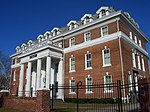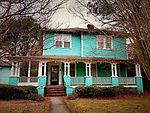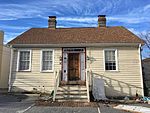Woodrow Memorial Presbyterian Church
19th-century Presbyterian church buildings in the United StatesAfrican Methodist Episcopal churches in South CarolinaChurches completed in 1885Churches in Columbia, South CarolinaChurches on the National Register of Historic Places in South Carolina ... and 5 more
Columbia, South Carolina Registered Historic Place stubsColumbia, South Carolina building and structure stubsNational Register of Historic Places in Columbia, South CarolinaPresbyterian churches in South CarolinaSouth Carolina church stubs

Woodrow Memorial Presbyterian Church (also known as Bishop's Memorial A.M.E. Church) is a historic church in Columbia, South Carolina.It was built in 1885 and added to the National Register of Historic Places in 1979. In addition to its National Register of Historic Places status, Woodrow Memorial falls within the boundaries of Waverly Protection Area, a Preservation District within the City of Columbia Urban Design and Historic Preservation District system, as well as in Waverly Historic District.
Excerpt from the Wikipedia article Woodrow Memorial Presbyterian Church (License: CC BY-SA 3.0, Authors, Images).Woodrow Memorial Presbyterian Church
Washington Street, Columbia Waverly
Geographical coordinates (GPS) Address Nearby Places Show on map
Geographical coordinates (GPS)
| Latitude | Longitude |
|---|---|
| N 34.009444444444 ° | E -81.018055555556 ° |
Address
Bishop's Memorial AME Church
Washington Street
29204 Columbia, Waverly
South Carolina, United States
Open on Google Maps









